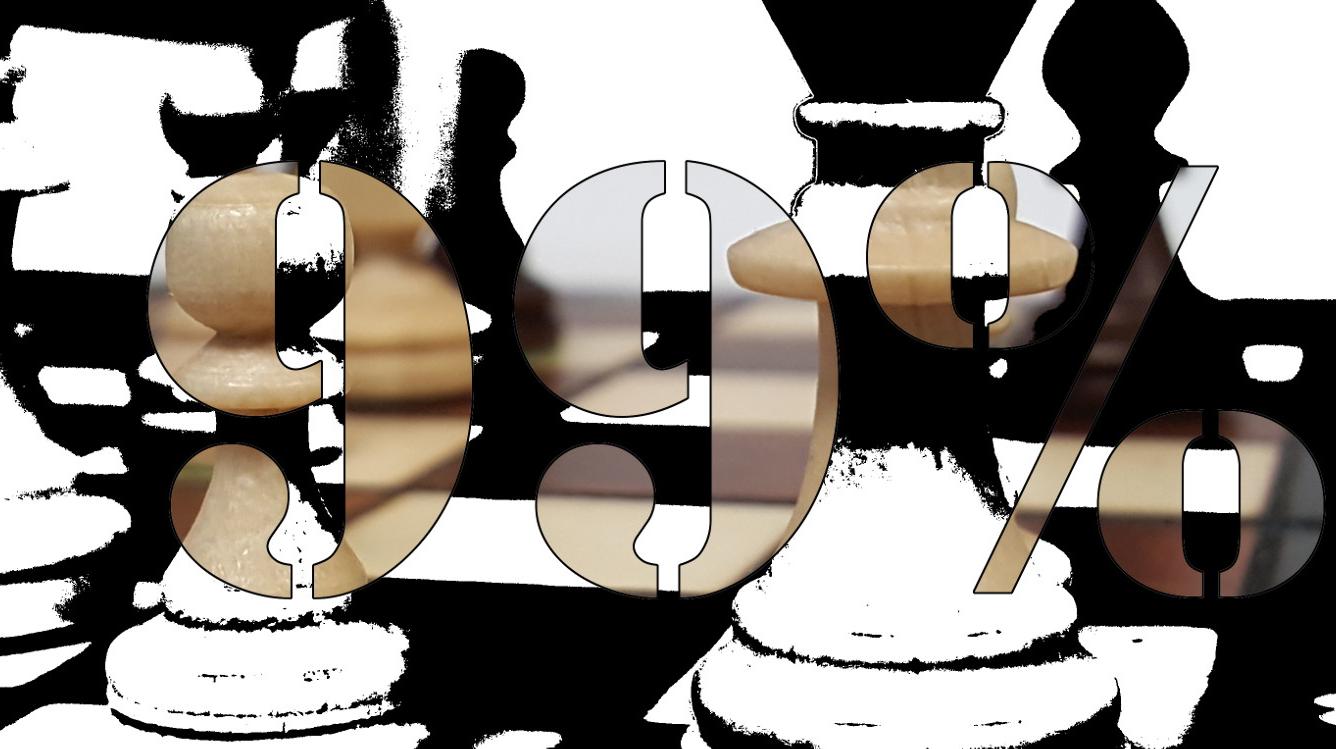
The 99 Percent, Part 1
One bad move nullifies forty good ones. – I. A. Horowitz
If the quote above doesn't make it clear, I'm not going to talk about politics; just tactics. The more fitting quote may have been the one about chess being 99% tactics but I decided that what tactics really come down to, most of the time, is being able to recognize and punish the bad moves. Sometimes, the one bad move.
I have been working through my backlog of games, trying to find all the places where my opponent or I made the really bad moves. I'll describe my current process below but want to start off with a couple examples from some of my games. This first example is actually an opening blunder I made at the 2012 Kansas Open during the third round. I started playing the opening too quickly and blundered into a position I have previously read about but neglected to fully analyze during the game. Seeing what appeared to be a free pawn, I took it; big mistake.
OK, so now I'm down two pawns and the queens are off the board. Not really a good start but I thought I would play it out and see what I could do.
My opponent was able to hold on to the advantage, with only what I can describe as minor inaccuracies (based on Houdini evaluations and our playing strength), until move 22. My previous move had been 22. Bxb5+ and my opponent replied with 22. ... Bc6. Can you see the problem?

In part 2 of this article, I'll give the solution, but for now I will move on to the next position.
This one came from a recent casual game where it looked like we were in a drawn endgame, even with white's pawn advantage due to the doubling on the h-file. There were inaccuracies/blunders earlier in the game but from move 28 until this point, 20 moves later, the game was essentially even according to the engine and to my over-the-board analysis; there were some inaccuracies, but nothing that gave either side a major advantage. I was playing black and white's last move was Qc4
Can you see the best continuation?

The Process
Again, in the next part of the article, I'll provide the solutions to these positions but wanted to go over the process I'm currently using to analyze my games.
I'm most concerned with finding moves/positions in the game where a major mistake was made. Sometimes these are found during the game, after the move was made or during post game analysis with my opponent, but sometimes we just don't see that there was a missed opportunity or the blunder wasn't obvious to either of us.
It is of my opinion, at my current skill level, that most of the time if I didn't see a move in the game or in the immediate post game analysis, I won't see it in later, manual analysis either. As I get better, I'm hoping that I will begin to develop better skill at finding the critical positions in post game analysis (and in game too for that matter) but for now I'm falling back to using an engine to pinpoint those places after completing the game.
Once I get my games into my database, I use the auto-annotate features of the software to find those critical moments. I'm currently using SCID vs. PC, though other programs have similar features. Here are the parameters I'm using:
- 30 seconds per move
- Blunder check for both sides, with a current threshold of 0.5 between the previous evaluation and he current one, inserting the value into the game if that criteria is met
- Evaluate variations to catch alternate lines played in casual games and to check post-game analysis lines
- Do not add variations to the game; I want to try and figure out the better move/line and not have the engine give it to me
I had previously utilized SCID for this process but SCID vs. PC has a much better annotation interface and can insert the current score and previous score for easier analysis later. SCID also is hard to configure in a way to skip adding variations and leads to more cleanup of the game score and more time required to analyze.
After the program has completed the analysis, it is time to pull up the positions, on board or on the computer, and try to analyze how to improve on what was actually played. I have found that many evaluations of less than a pawn are beyond my skill level to evaluate accurately, even with later engine assistance, so if I can't determine a better move or why a particular engine move is considered better, I move on to the next recorded blunder.
When the process is complete, I usually end up with at least one good position that can be used for later study, and often more. At my current skill level, most of these study positions are tactical in nature and that is what I am presenting.
In the next part, I will provide a few of these positions; some where my opponent or I found the over-the-board continuation and some where we didn't. I will also provide the solutions, to the positions given here.
(originally published at www.joplinchess.org)
